How Physicians Led Their Organizations Through the “Fog of War”
// By Marlene Kurban //
 Health systems activate their hospital incident command systems (HICS) during a crisis, but usually the crisis doesn’t last for more than a year as the coronavirus pandemic has. Four health system leaders share how the structure helped them navigate during the worst of it, and how its flexibility continues to meet the needs for system-wide coordination and communication.
Health systems activate their hospital incident command systems (HICS) during a crisis, but usually the crisis doesn’t last for more than a year as the coronavirus pandemic has. Four health system leaders share how the structure helped them navigate during the worst of it, and how its flexibility continues to meet the needs for system-wide coordination and communication.
From the start of the pandemic, hospital incident command centers became the temporary headquarters for crisis management. Leaders had to adapt day-to-day to keep their organizations and all stakeholders aligned, with effective communications strategies an absolutely essential component. But the pandemic is not over yet, and timely, accurate guidance continues to be a critical need.
Dr. Steven Cabrales, chief medical officer of Community Hospital of the Monterey Peninsula; Dr. Kevin L. Lewis, president and CEO at SSM Health Medical Group in Oklahoma; Dr. Ron Nutting, chief medical officer at Reading Hospital, Tower Health; and Dr. John F. Rodis, founder and president of Arista Health, LLC, shared their experiences over the past year during the recent Strategic Health Care Marketing webinar, “Hospital Incident Command Centers: Communication Tools and Strategies that Help Physician Executives Lead Through the Pandemic,” moderated by Emilie Ansel, CEO of Private Health News.
Activating Incident Command Centers
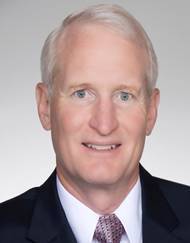
Dr. Ron Nutting, chief medical officer, Reading Hospital, Tower Health
The panelists describe how their hospital incident command centers were activated early on in the pandemic.
“We have a strategy with our incident command center that allows us to stand it up at a moment’s notice, so at the start of the crisis we stood up our incident command center at Reading Hospital and it ran seven days a week, around the clock,” says Dr. Ron Nutting.
“At the same time, we also set up incident command centers at our sister facilities as well as at the system level. We gradually dialed back that availability time to the daylight hours, and then it became small pockets of time during the week with people available 24 hours a day to loop in the leadership team. It required some nimbleness, but it was a take-off of our normal incident command structure that we do for any infrastructure failure,” Nutting says.
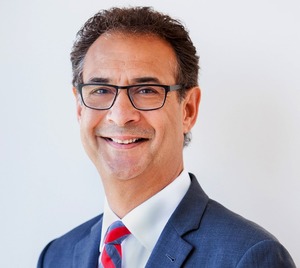
Dr. John F. Rodis, founder and president, Arista Health, LLC
“I think the biggest difference for us, and for others, was the duration,” notes Dr. John Rodis. “Usually when we set up it’s for a day or two, for a mass casualty event, a power outage, or weather-related incident. The other variable is that we’ve gone from single hospitals to systems. We had a regional command center at Trinity Health of New England, and each of the hospitals in the region had their incident command centers. Nationally, 92 hospitals had their incident command centers up and running so there was a lot of communication back and forth.”
“We set up our incident command center very early on,” Dr. Steven Cabrales says. “And what we discovered, as many others did, is that incident command is usually set up when the organization is going through a short-term traumatic event. You don’t usually have your entire executive team active for the long run. We had to develop a unique strategy to combine our incident command structure, fully activated, with an active executive team in the area. We just recently deactivated our formal incident command, but we still have a COVID task force that meets weekly.”
“I think the biggest difference for us, and for others, was the duration. Usually when we set up it’s for a day or two, for a mass casualty event, a power outage, or weather-related incident.”
Dr. John Rodis
Arista Health, LLCDr. Kevin Lewis agrees that the time span was a learning experience. “The idea of running a marathon at a sprint was not something we were all equipped for. The other important thing related to systems of care was identifying roles and responsibilities at each level and identifying where needs could be met most effectively. For instance, perhaps the supply chain could do a really good job with mass supplies related to PPE. But in a crunch, what are the local resources we could draw on? Often what we thought was not what played out in reality.”
Communications and the ‘Fog of War’
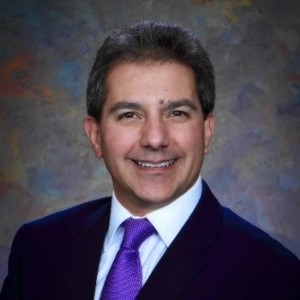
Dr. Steven Cabrales, chief medical officer, Community Hospital of the Monterey Peninsula
The four physician leaders agree that communications departments took a front-row seat during the crisis and continue to maintain a vital role.
“Communication was one of the key reasons we wanted to implement the hospital incident command system because they have such a key role in the organization and the community,” says Dr. Cabrales. “They provided us with consistent information, in consistent formatting, and were instrumental in keeping us all in the know. We made them a permanent team member on the COVID task force.”
Weekly updates to physicians in the community and information on the hospital’s intranet and extranet kept people current. “I get emails from physicians outside of the organization who thank us for the continued updates. It’s really served everyone well,” he says.
“Communication was one of the key reasons we wanted to implement the hospital incident command system because they have such a key role in the organization and the community.”
Dr. Steven Cabrales
Community Hospital of the Monterey PeninsulaDr. Rodis notes that the beginning of the pandemic was analogous to the “fog of war,” with communication essential during the initial period of chaos. “We needed to instill confidence and communicate effectively to our team, and to the community at large, as well as the medical community. My chief medical officer set up a noon call and 50 or 60 doctors called in every day — community physicians and hospital-based staff. It was very effective.”
Balancing the flow of information was also important. Too much or too little could be equally unhelpful.
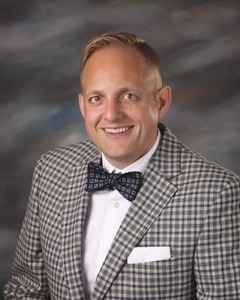
Dr. Kevin L. Lewis, president & CEO, SSM Medical Health Group
“People don’t have time to wade through a flooded inbox. We needed to set up a site where people could access the most important and updated information,” says Dr. Lewis. “Our calls for each of our facilities and ministries was set up for two-way communication but we wanted to be higher-touch, which was difficult when everything was shut down. So, we put together an agreement where we could push to text and push to other mechanisms, but assured our providers we wouldn’t overuse it. We also recorded a daily video from our incident command structure with key information that we pushed to mobile devices. The feedback was great, and we still do that once a month as just a general communication.”
“Repeating the message often enough to make sure everyone gets it is a lesson we learned,” says Dr. Nutting. “From the outset, we set up a bimodal communication system based on structured huddles for incoming information and special inboxes where people could either phone or leave a message with their concerns, and that would drift into our command centers and we could address them in real time. We also designated the chief of our infectious disease section to be the public and internal-facing expert on the illness, who has become a local luminary in this corner of the state by being on TV, news, radio, and podcasts.”
The expanded role of communications offered new opportunities for staff outside of their normal roles.
“We … recorded a daily video from our incident command structure with key information that we pushed to mobile devices. The feedback was great, and we still do that once a month as just a general communication.”
Dr. Kevin Lewis
SSM Medical Health Group“Our communications staff wasn’t large enough to handle all of these new responsibilities, so our incident command center identified additional people for extra assignments. Some younger executives with smaller roles got really big roles because they were capable of doing things beyond what was expected,” Nutting adds. “It’s been an adventure and a great learning experience for all of us.”
Addressing Pandemic-Related Burnout
The pandemic has been a severely disruptive event for many physicians in private practices whose businesses were essentially shut down. The impact on frontline staff is also an ongoing concern.
“We have a support system to help our employees cope, and we’ve done our best to be physically present and provide moral support,” Dr. Rodis states. “The number of patients dying has taken a toll on even the most seasoned critical care nurses. I don’t think we’ve seen the full effect of burnout with our physicians yet.”
Dr. Lewis agrees. “I think it’s something we’ll be dealing with for years to come. We were focused on the physician level and advanced practice clinician level burnout, but these clinicians were deeply concerned about what their staff were going through. It’s a team environment, and we realized we have to take care of whole team.”
“We tried to make sure people knew they weren’t dealing with this alone. We had all hands on deck as much as we could, but it still felt like it wasn’t enough.”
Dr. Ron Nutting
Tower Health“Nursing staff, respiratory therapists, everyone involved has been through a struggle of enormous proportions,” Dr. Nutting states. “We tried to make sure people knew they weren’t dealing with this alone. We had all hands on deck as much as we could, but it still felt like it wasn’t enough.”
“We redeployed surgeons and anesthesiologists to the ICU and medical floors when operating rooms shut down. The morale of staff and physicians changed when they saw people coming to their aid,” says Dr. Cabrales. “We also discovered programs such as Meru Health that medical staff are using. We need to make sure we take care of ourselves.”
The Next Challenge: Vaccination Distribution
Distributing vaccinations, cultivating vaccine trust, and overcoming misinformation are just a few of the challenges that health care systems are managing now.
“We have a large number of sites participating now in vaccine distribution,” says Dr. Lewis. “In addition to joint public service campaigns, we’re addressing public mistrust and hesitancy with a call-in radio show to answer questions.”
“We’ve designated a county-wide area for vaccines in each of our regions,” says Dr. Nutting. “To address vaccine reluctance, we’re coordinating with other community groups to reach out to people we know are in need, help them register, and deliver vaccines in areas easily accessible by mass transportation.”
“Our challenges aren’t so much about getting out to people,” says Dr. Cabrales. “We’re just waiting for vaccines to come through. People come in and it’s a festive atmosphere, a fully volunteer base by physicians and staff, an incredible outpouring from the community.”
Marlene Kurban is a freelance writer with more than 20 years of experience in nonprofit management and the behavioral health care field.
